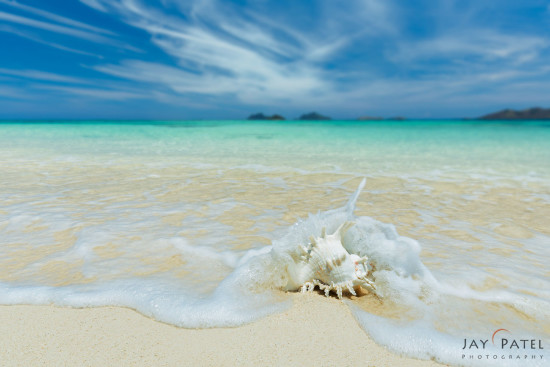When we’re on location, we spend a lot of time looking for foreground elements. We want to convey a sense of location – not just distant, untouchable beauty… but the feeling that you are a part of this place. You can see the tiny details right in front of you… reach out and touch the rocks or put your fingers in the water… walk into the photograph. We want you to feel that you are standing there experiencing it in person. Maybe that’s asking a bit much from a photograph, but we do try.
The photo above is from Snowmass Wilderness in Colorado. We spent hours wandering these beautiful hillsides. The area offered stunning beauty, but not very many obvious foreground objects. I used the interesting bark of the tree to give the viewer a sense of the texture of the bark. When you know how that papery, white bark looks and feels, you gain a deeper understanding of the place… a connection with the landscape.
If you can get up close and personal, your brain interprets the image more fully. You start to feel the textures in the bark, the warmth of the sun on your face. You know these sensations and, when you see a photograph, memory mingles with vision to evoke a response.
Not convinced? Try this… take a piece of paper and hold it up in front of your computer screen so that it covers the foreground in each image in this post. In the photo above, cover up those tree trunks on the left. In the rest of the photos below, cover up the bottom third – or half – of the photograph. Are the images as effective without the foreground?
This shot from the everglades in Florida is entirely different from the last one. When you look at a photo, do you take the time to let the sensations of the place sink in? The dry grass crackling underfoot, the wind rattling the leaves, the light filtering through heavy thunderheads. And does the foreground in this shot help draw you in?
And what about shooting in locations that seem similar to one another? The desert, for example. Is one desert just like the next? Sand, tumbleweed, dune… how do I convince you that you haven’t seen this desert before? The sky – lovely as it is – doesn’t tell you a thing about where you are. The distant mountains are indistinct. It’s the foreground that gives you a sense of place. Take a look at the next three images and note how the foreground provides information about the place. (And remember, if these images were printed at large size, you’d be able to see even more details!)
Another creative composition technique to create a sense of place is to keep the foreground element sharply in focus while letting the background fade out of focus. This technique requires the backgroud elements to retain enough details so that the viewers can get a sense of place to create a dream look for your landscape photos. Your choice aperture and distance of your subject from the camera become very critical to achieving a dreamy look. Here are few examples:
As you can see from the above examples, foreground elements can be used in a number of different way to enhance your composition and engage the viewer. Sometimes using these foreground elements requires us to get very close these foreground elements. For this, we rely on focus stacking or hyper focal distance
Foreground isn’t always necessary, but it can be an important defining element. Get creative! Invite the viewer to step into your mind and see through your eyes.
Does finding a foreground element and composing an image come naturally to you? Or do you struggle to include foreground details in your photos? Do you have suggestions or tips for other photographers? Comments are always welcome. Maybe others can learn from your experience!
Visual Wilderness https://ift.tt/2Lw2P7F
Sourced by Time Trap Photography sharing the best photography tips, news and tricks throughout the industry. Time Trap Photography is dedicated to freezing those special moments in life that can be revisited and admired for generations to come. - Shannon Bourque
Please visit our main site for booking availability and rates.

Receive valuable industry knowledge delivered free to your email each day.














No comments:
Post a Comment
Thank you so much for your comment. A moderator will review and approve all relevant posts. We appreciate your support and encourage you to stay with us by subscribing to our email updates. Where you can easily pick and choose what photography subjects interests you. Subscription link: http://bit.ly/photo-sub